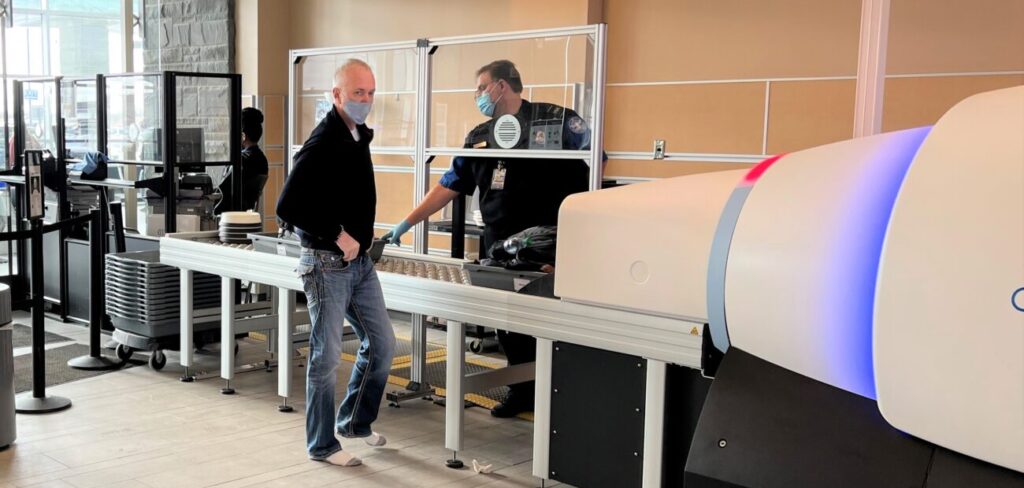Niagara Falls International Airport in New York has implemented computed tomography checkpoint (CT) scanners that provide 3D imaging at Transportation Security Administration (TSA) checkpoints.
The system applies sophisticated algorithms for the detection of explosives, including liquids, by creating a 3D image that can be viewed and rotated on three axes for thorough visual image analysis by a TSA officer who can use the touchscreen monitor to rotate the x-ray image 360° to view the contents of the bag. If a bag requires further screening, TSA officers will inspect it to ensure that a threat item is not contained inside.
This installation was made to improve the airport’s explosives detection capabilities and reduce the number of bag checks required. Passengers using this machine at Niagara Falls Airport will be permitted to leave laptops and other electronic devices in their carry-on bags.
Bart Johnson, the TSA federal security director for upstate New York, said, “The new units provide critical explosives detection capabilities at the checkpoint. TSA remains committed in getting the best technology to enhance security and improve the screening experience.
“Our officers’ use of CT technology substantially improves our threat detection capability at the checkpoint. TSA’s current screening technology for carry-on bags uses 2D images. The CT technology applies sophisticated algorithms for the detection of explosives, including liquid explosives and other threat items.”


